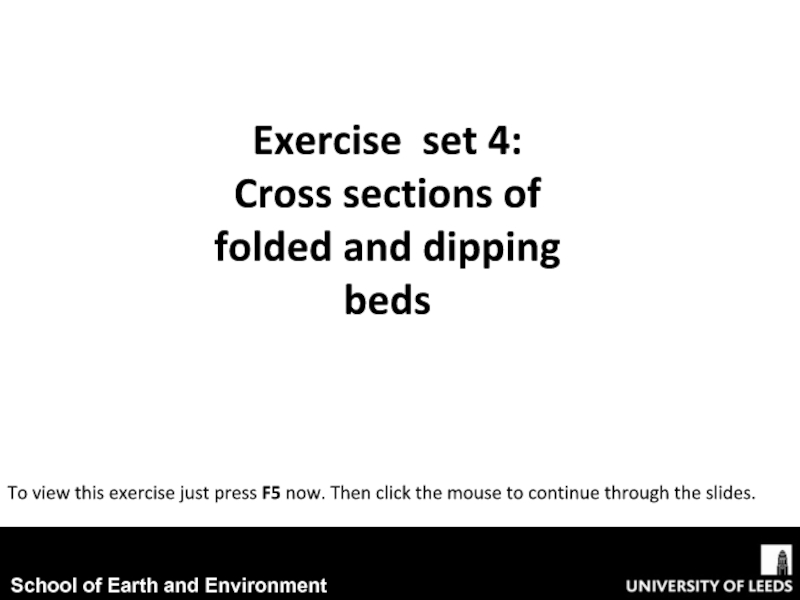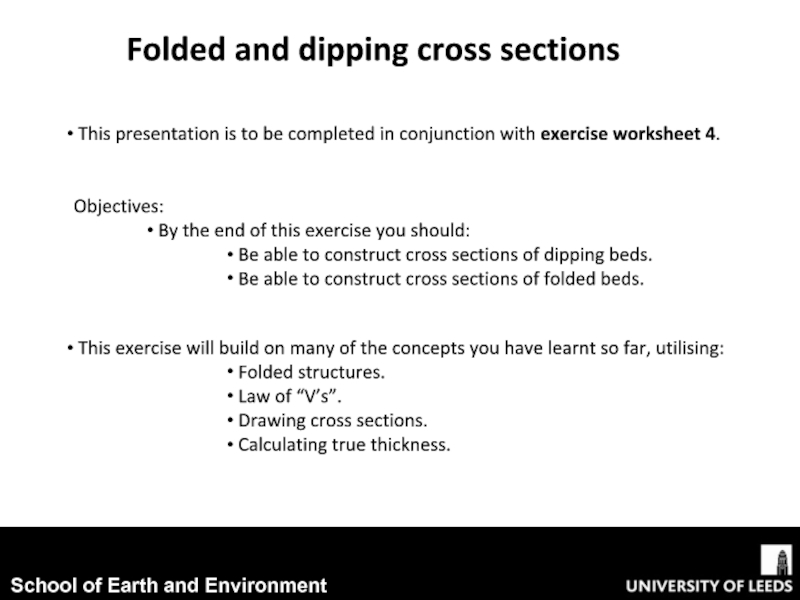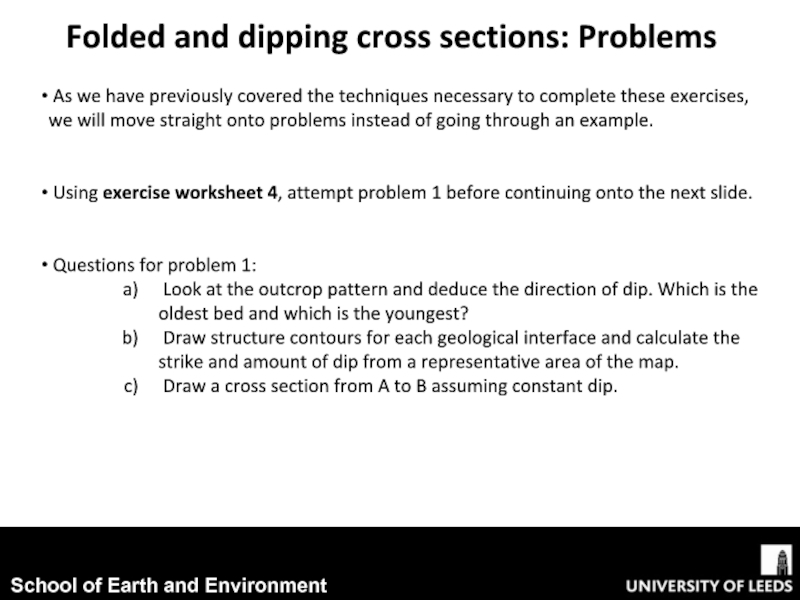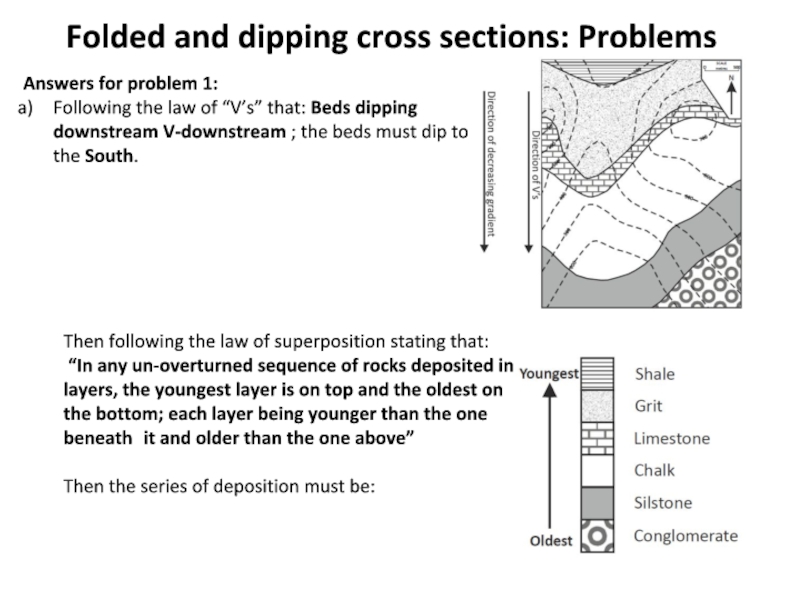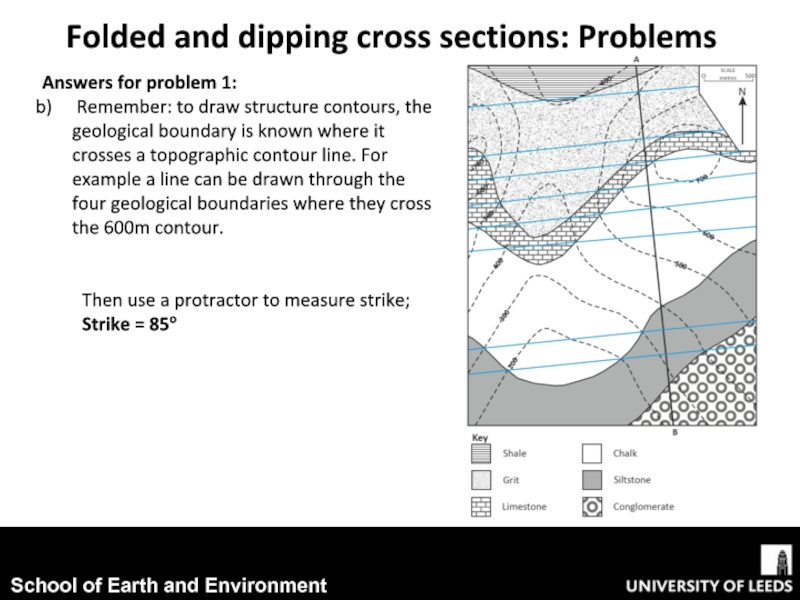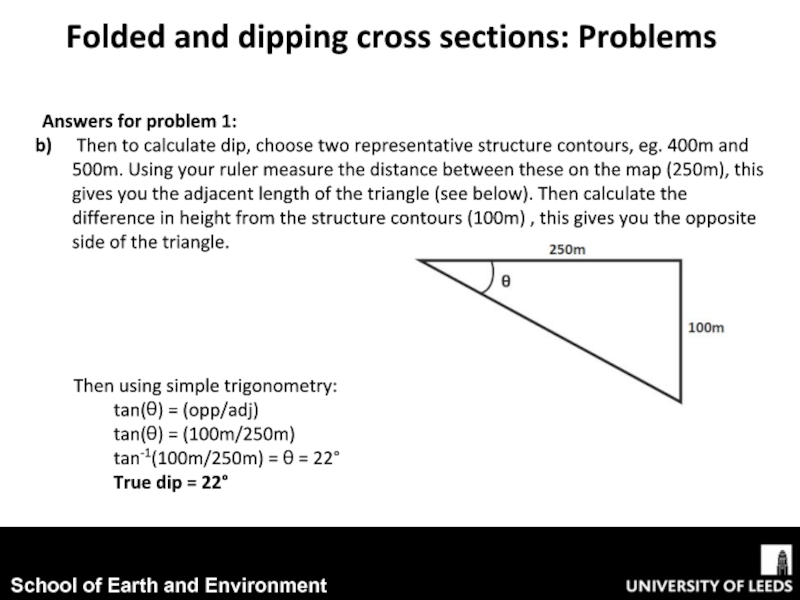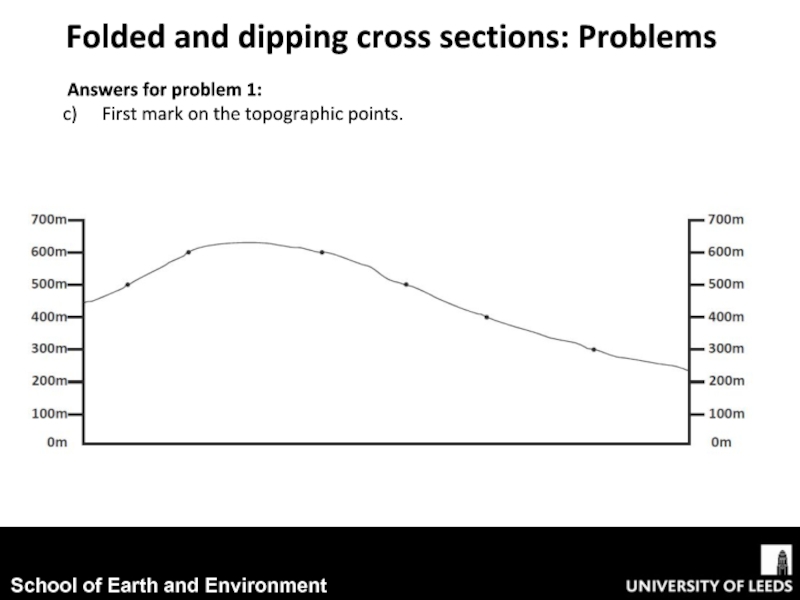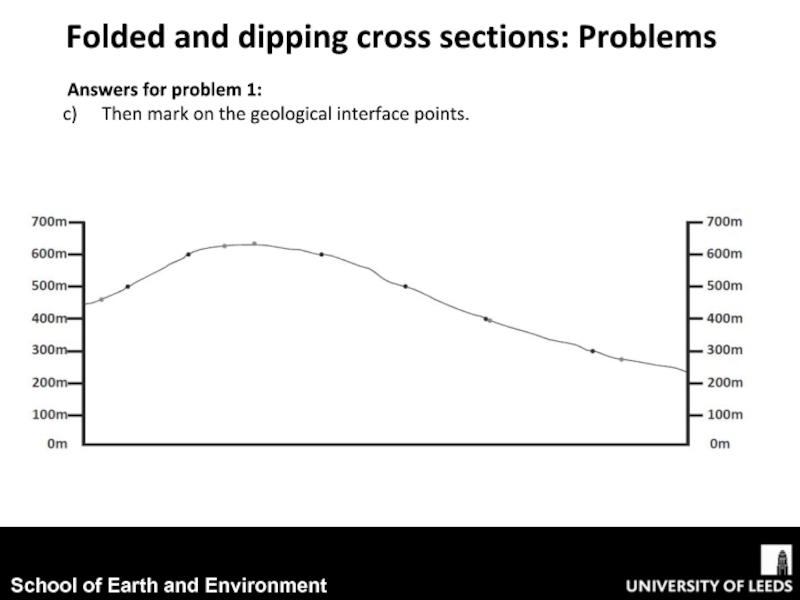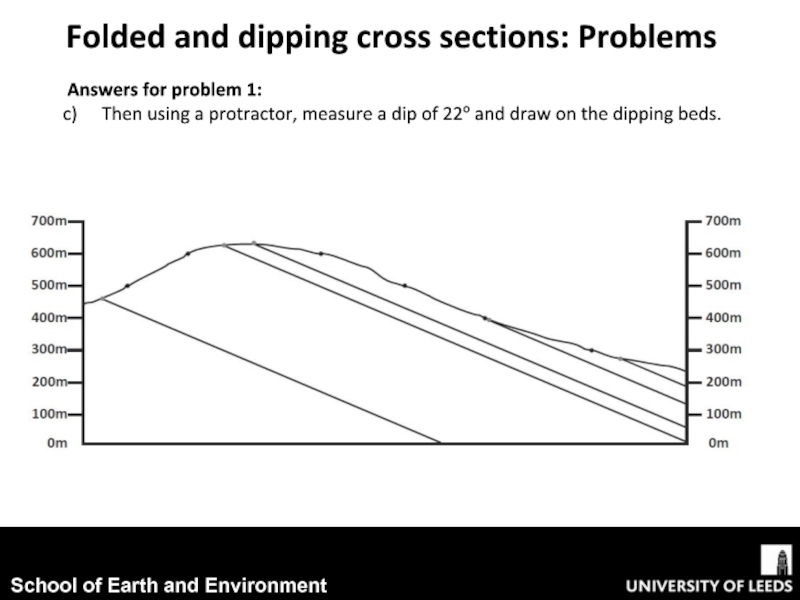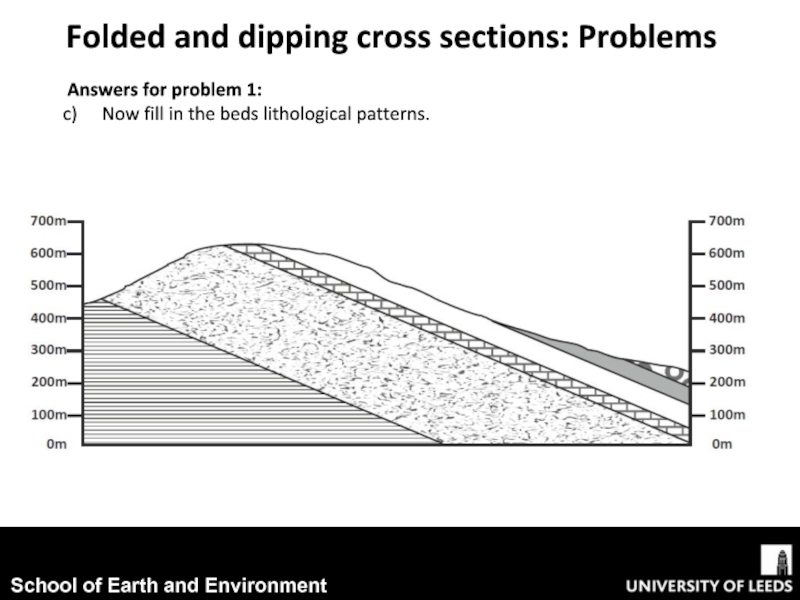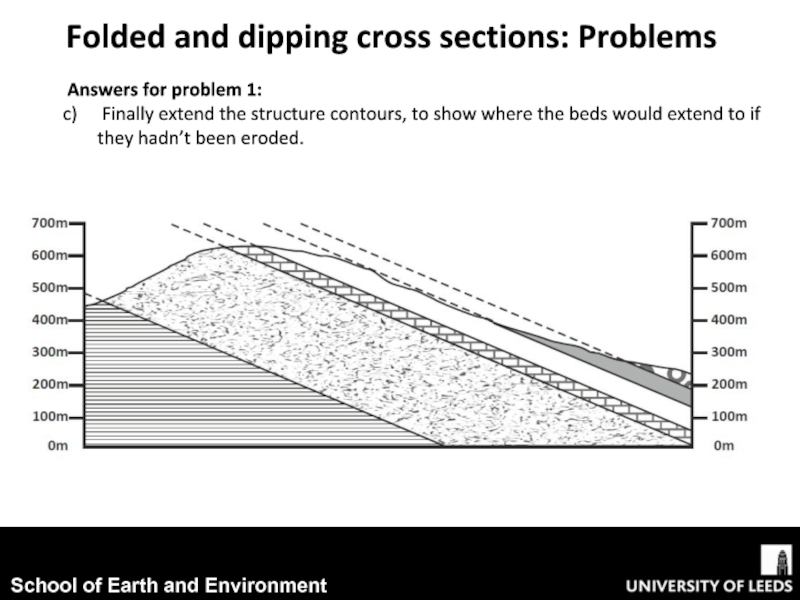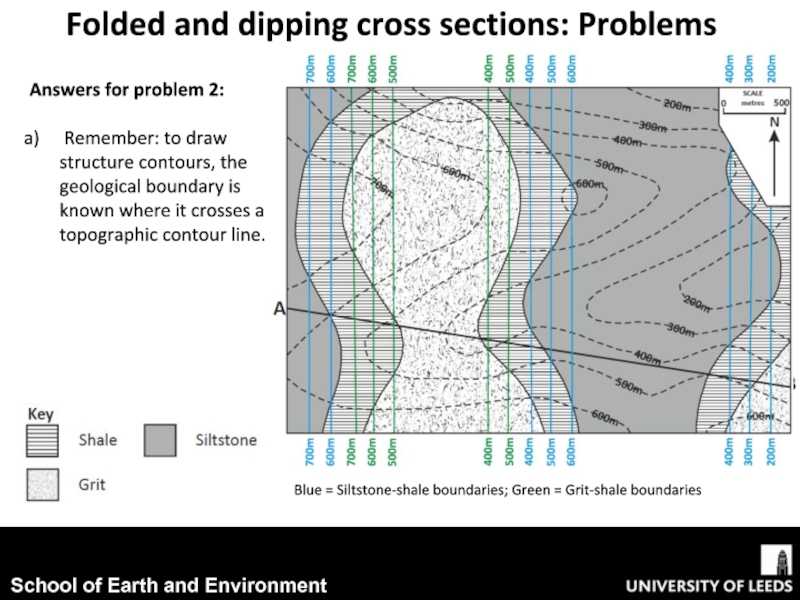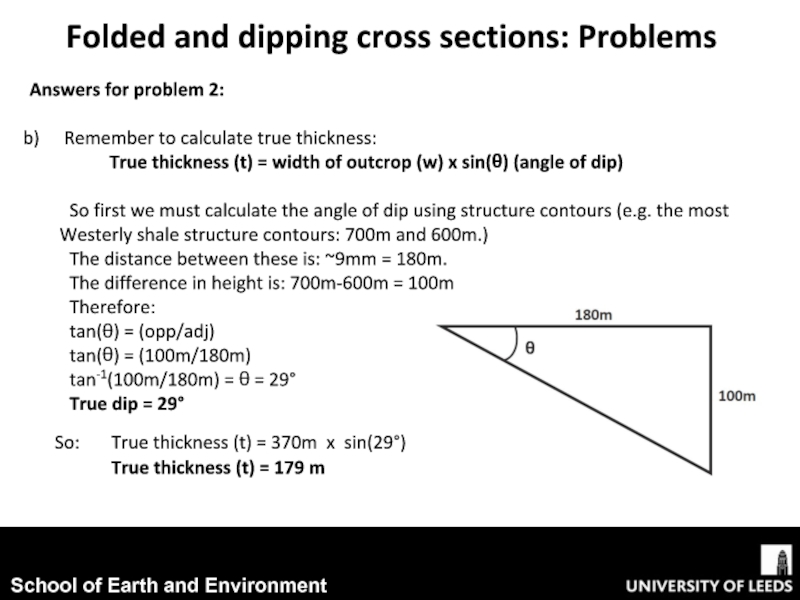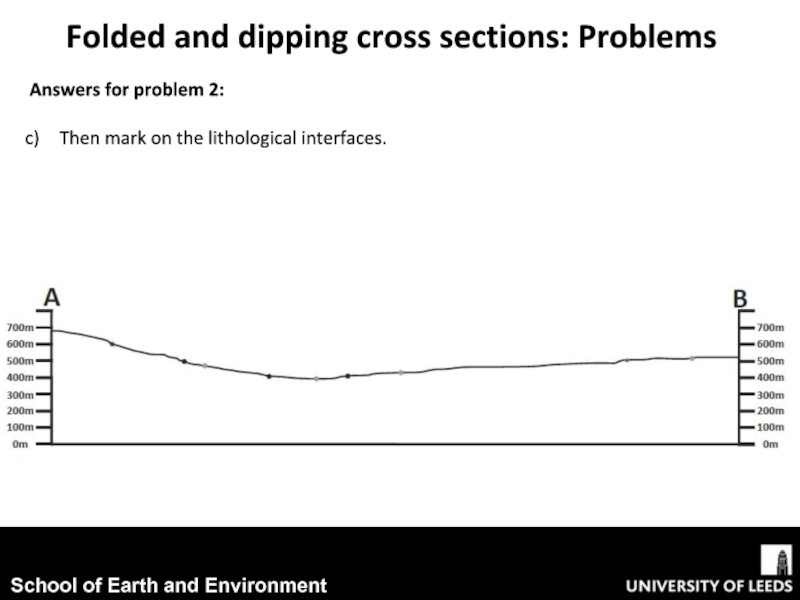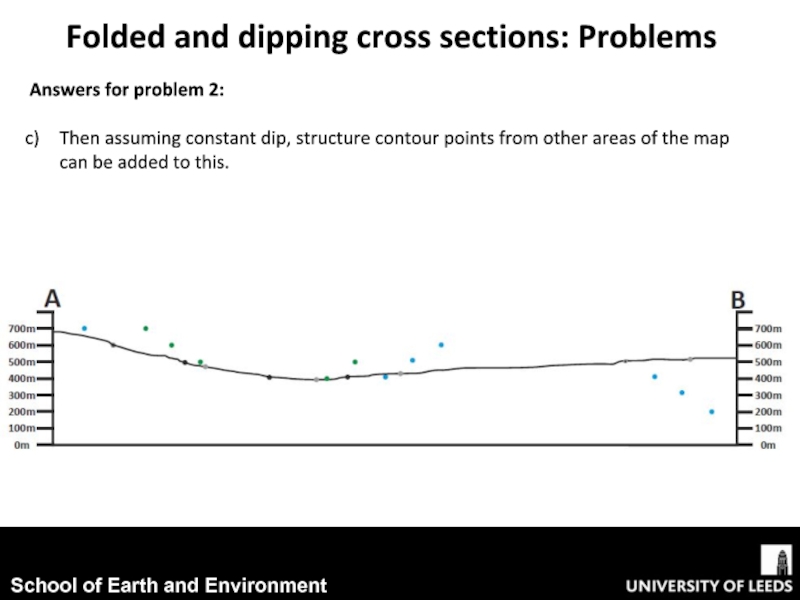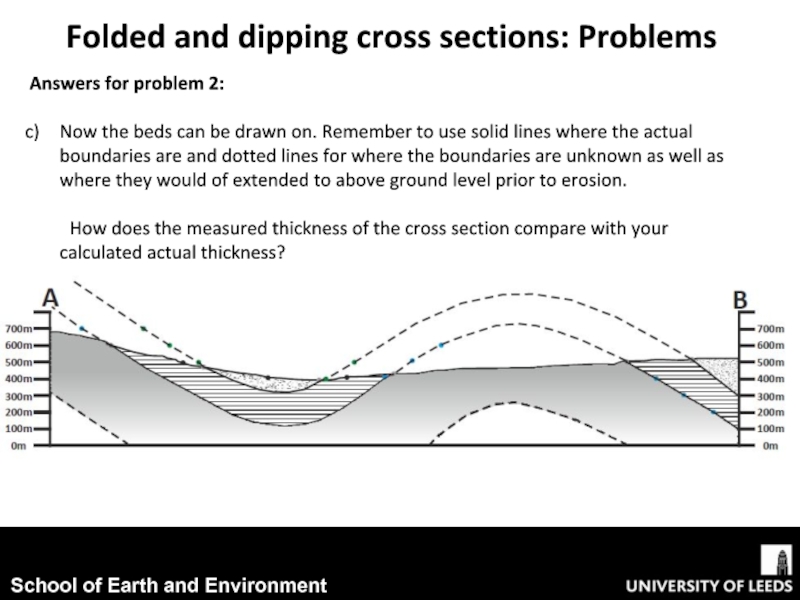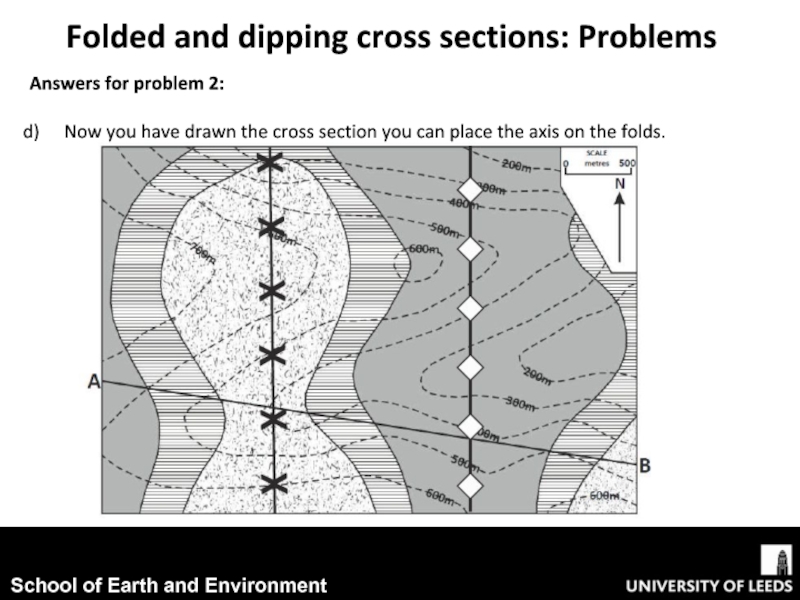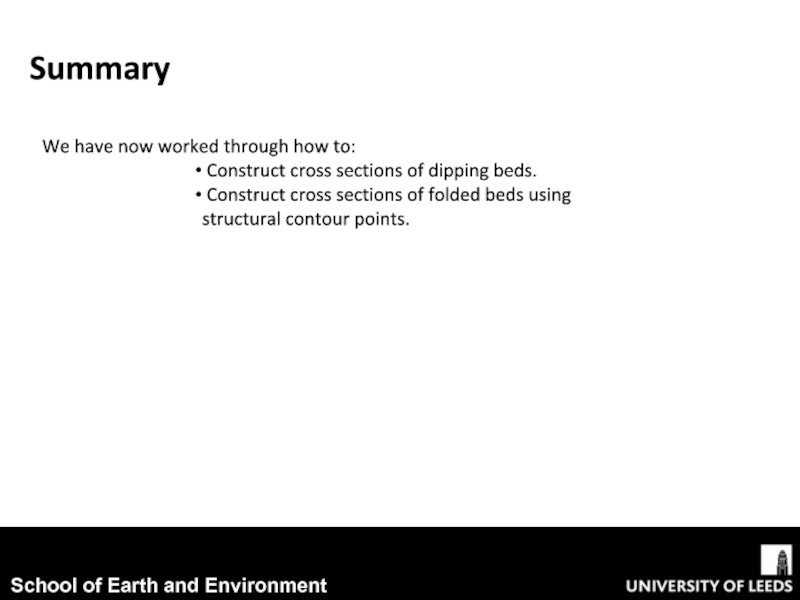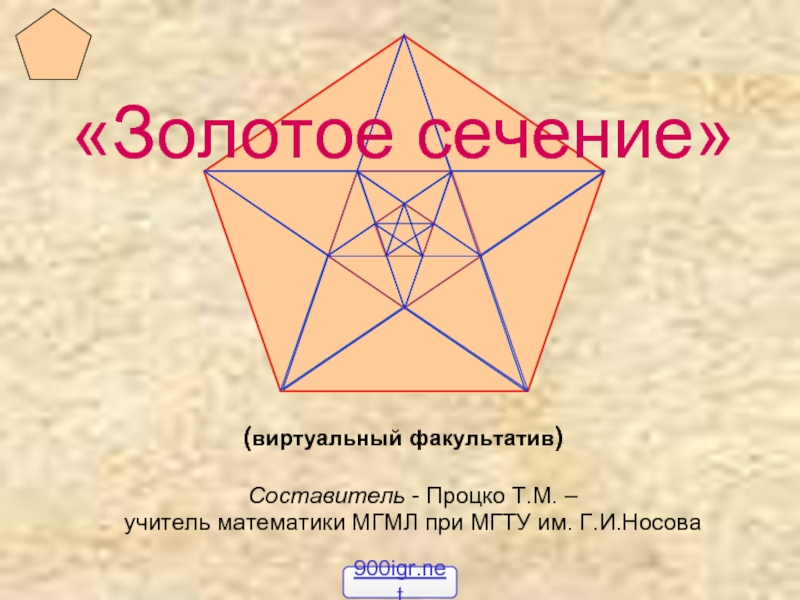- Главная
- Разное
- Дизайн
- Бизнес и предпринимательство
- Аналитика
- Образование
- Развлечения
- Красота и здоровье
- Финансы
- Государство
- Путешествия
- Спорт
- Недвижимость
- Армия
- Графика
- Культурология
- Еда и кулинария
- Лингвистика
- Английский язык
- Астрономия
- Алгебра
- Биология
- География
- Детские презентации
- Информатика
- История
- Литература
- Маркетинг
- Математика
- Медицина
- Менеджмент
- Музыка
- МХК
- Немецкий язык
- ОБЖ
- Обществознание
- Окружающий мир
- Педагогика
- Русский язык
- Технология
- Физика
- Философия
- Химия
- Шаблоны, картинки для презентаций
- Экология
- Экономика
- Юриспруденция
Cross sections of folded and dipping beds презентация
Содержание
- 1. Cross sections of folded and dipping beds
- 2. This presentation is to be completed
- 3. Folded and dipping cross sections: Problems
- 4. Folded and dipping cross sections: Problems Answers
- 5. Answers for problem 1: Remember: to
- 6. Then using simple trigonometry: tan(θ) = (opp/adj)
- 7. Folded and dipping cross sections: Problems Answers
- 8. Folded and dipping cross sections: Problems Answers
- 9. Answers for problem 1: Then using
- 10. Folded and dipping cross sections: Problems Answers
- 11. Folded and dipping cross sections: Problems Answers
- 12. Using exercise worksheet 4, complete problem
- 13. Folded and dipping cross sections: Problems Answers
- 14. Folded and dipping cross sections: Problems Answers
- 15. Folded and dipping cross sections: Problems Answers
- 16. Folded and dipping cross sections: Problems Answers
- 17. Answers for problem 2: Then assuming
- 18. Folded and dipping cross sections: Problems Answers
- 19. Folded and dipping cross sections: Problems Answers
- 20. We have now worked through how to:
Слайд 1Exercise set 4:
Cross sections of folded and dipping beds
To view this
Слайд 2 This presentation is to be completed in conjunction with exercise
Objectives:
By the end of this exercise you should:
Be able to construct cross sections of dipping beds.
Be able to construct cross sections of folded beds.
Folded and dipping cross sections
This exercise will build on many of the concepts you have learnt so far, utilising:
Folded structures.
Law of “V’s”.
Drawing cross sections.
Calculating true thickness.
Слайд 3Folded and dipping cross sections: Problems
As we have previously covered
Using exercise worksheet 4, attempt problem 1 before continuing onto the next slide.
Questions for problem 1:
Look at the outcrop pattern and deduce the direction of dip. Which is the oldest bed and which is the youngest?
Draw structure contours for each geological interface and calculate the strike and amount of dip from a representative area of the map.
Draw a cross section from A to B assuming constant dip.
Слайд 4Folded and dipping cross sections: Problems
Answers for problem 1:
Following the law
Then following the law of superposition stating that:
“In any un-overturned sequence of rocks deposited in
layers, the youngest layer is on top and the oldest on
the bottom; each layer being younger than the one
beneath it and older than the one above”
Then the series of deposition must be:
Слайд 5Answers for problem 1:
Remember: to draw structure contours, the geological
Then use a protractor to measure strike;
Strike = 85o
Folded and dipping cross sections: Problems
Слайд 6Then using simple trigonometry:
tan(θ) = (opp/adj)
tan(θ) = (100m/250m)
tan-1(100m/250m) = θ =
True dip = 22°
Folded and dipping cross sections: Problems
Answers for problem 1:
Then to calculate dip, choose two representative structure contours, eg. 400m and 500m. Using your ruler measure the distance between these on the map (250m), this gives you the adjacent length of the triangle (see below). Then calculate the difference in height from the structure contours (100m) , this gives you the opposite side of the triangle.
Слайд 7Folded and dipping cross sections: Problems
Answers for problem 1:
First mark
Слайд 8Folded and dipping cross sections: Problems
Answers for problem 1:
Then mark
Слайд 9Answers for problem 1:
Then using a protractor, measure a dip
Folded and dipping cross sections: Problems
Слайд 10Folded and dipping cross sections: Problems
Answers for problem 1:
Now fill
Слайд 11Folded and dipping cross sections: Problems
Answers for problem 1:
Finally extend
Слайд 12 Using exercise worksheet 4, complete problem 2 before continuing onto
Questions for problem 2:
On the map draw structure contours for each boundary (i.e. Siltstone-Shale boundary; Shale-Grit boundary).
Calculate the true thickness of the shale bed.
Using the topographic and structure contours, construct a cross section through A to B.
Indicate on the map the position of an anticlinal axis with the symbol:
and a synclinal axis with the symbol:
Folded and dipping cross sections: Problems
Слайд 13Folded and dipping cross sections: Problems
Answers for problem 2:
Remember: to
Blue = Siltstone-shale boundaries; Green = Grit-shale boundaries
Слайд 14Folded and dipping cross sections: Problems
Answers for problem 2:
Remember to
True thickness (t) = width of outcrop (w) x sin(θ) (angle of dip)
So first we must calculate the angle of dip using structure contours (e.g. the most Westerly shale structure contours: 700m and 600m.)
The distance between these is: ~9mm = 180m.
The difference in height is: 700m-600m = 100m
Therefore:
tan(θ) = (opp/adj) tan(θ) = (100m/180m) tan-1(100m/180m) = θ = 29°
True dip = 29°
So: True thickness (t) = 370m x sin(29°)
True thickness (t) = 179 m
Слайд 15Folded and dipping cross sections: Problems
Answers for problem 2:
First mark on
Слайд 16Folded and dipping cross sections: Problems
Answers for problem 2:
Then mark on
Слайд 17Answers for problem 2:
Then assuming constant dip, structure contour points from
Folded and dipping cross sections: Problems
Слайд 18Folded and dipping cross sections: Problems
Answers for problem 2:
Now the beds
How does the measured thickness of the cross section compare with your calculated actual thickness?
Слайд 19Folded and dipping cross sections: Problems
Answers for problem 2:
Now you
Слайд 20We have now worked through how to:
Construct cross sections of
Construct cross sections of folded beds using structural contour points.
Summary
